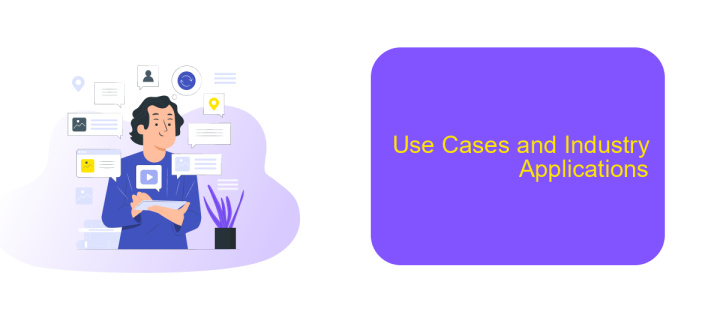Microsoft Power Automate Vs UiPath Robotic Process Automation
In the rapidly evolving landscape of automation, businesses are increasingly turning to tools like Microsoft Power Automate and UiPath Robotic Process Automation (RPA) to streamline operations and enhance productivity. This article delves into a comparative analysis of these two leading platforms, examining their features, strengths, and potential drawbacks to help organizations make informed decisions about their automation strategies.
Introduction
In today's rapidly evolving digital landscape, businesses are constantly seeking ways to streamline their operations and enhance efficiency. Two prominent tools in the realm of automation are Microsoft Power Automate and UiPath Robotic Process Automation (RPA). Both platforms offer robust solutions to automate repetitive tasks, yet they cater to different needs and industries.
- Microsoft Power Automate: Best suited for businesses already integrated into the Microsoft ecosystem, offering seamless integration with Office 365 and other Microsoft services.
- UiPath RPA: Known for its powerful capabilities in automating complex, large-scale processes, making it a preferred choice for enterprises with extensive automation needs.
Choosing the right automation tool depends on various factors, including the specific requirements of your business, the complexity of the tasks to be automated, and existing technological infrastructure. Additionally, integration services like ApiX-Drive can further enhance the functionality of these platforms by providing seamless connectivity between various applications and systems, ensuring a more cohesive workflow.
Key Features and Capabilities

Microsoft Power Automate offers a user-friendly interface that allows for seamless automation of workflows across various applications and services. It supports a wide range of integrations, enabling users to connect different systems effortlessly. Additionally, Power Automate provides robust analytics and monitoring tools, ensuring that businesses can track the performance and efficiency of their automated processes in real-time.
UiPath Robotic Process Automation (RPA) excels in providing advanced automation capabilities with its AI-driven tools. It offers extensive support for complex tasks, including data extraction, process mining, and cognitive automation. UiPath's platform is highly scalable, making it suitable for enterprises of all sizes. Furthermore, it includes features such as attended and unattended bots, which enhance the flexibility and efficiency of automation workflows. For seamless integration, services like ApiX-Drive can be utilized to connect UiPath with various other applications, ensuring a smooth and efficient automation process.
Pricing and Support

When comparing Microsoft Power Automate and UiPath Robotic Process Automation in terms of pricing and support, both platforms offer distinct advantages tailored to different business needs. Microsoft Power Automate provides a more straightforward pricing structure, with plans starting at per user per month, making it accessible for small to medium-sized businesses. UiPath, on the other hand, offers a more flexible pricing model, including a community edition that is free for individual users and small teams, but enterprise plans can be significantly more expensive.
- Microsoft Power Automate: Starts at per user/month, with additional premium features available at higher tiers.
- UiPath: Offers a free community edition, with enterprise plans that vary based on scale and customization needs.
In terms of support, both platforms excel with comprehensive documentation and community forums. Microsoft Power Automate benefits from Microsoft's extensive support network, including detailed guides and live chat assistance. UiPath provides robust support through its Academy, offering training modules and certification programs. For businesses needing advanced integration capabilities, services like ApiX-Drive can facilitate seamless connections between various applications, enhancing the automation experience on either platform.
Use Cases and Industry Applications

Microsoft Power Automate and UiPath Robotic Process Automation (RPA) are widely used in various industries for automating repetitive tasks and enhancing operational efficiency. Both tools offer unique capabilities that cater to different use cases and industry applications, making them valuable assets for organizations aiming to streamline their processes.
Power Automate is particularly effective in automating workflows within the Microsoft ecosystem, such as Office 365, Dynamics 365, and Azure. It excels in scenarios where integration with Microsoft services is crucial. On the other hand, UiPath is renowned for its advanced RPA capabilities, enabling the automation of complex processes across a wide range of applications and systems. It is often chosen for enterprise-level automation projects that require high scalability and robustness.
- Financial Services: Automating invoice processing, fraud detection, and customer onboarding.
- Healthcare: Streamlining patient data management, appointment scheduling, and insurance claims processing.
- Manufacturing: Enhancing supply chain management, quality control, and predictive maintenance.
- Retail: Optimizing inventory management, order processing, and customer service operations.
Both Power Automate and UiPath can be integrated with third-party services like ApiX-Drive to further enhance their capabilities. ApiX-Drive facilitates seamless integration between various applications, enabling organizations to create more cohesive and automated workflows. This integration capability ensures that businesses can leverage the strengths of both platforms to achieve optimal automation outcomes.
Conclusion
In conclusion, both Microsoft Power Automate and UiPath Robotic Process Automation offer robust solutions for automating business processes. Microsoft Power Automate excels in its seamless integration with the Microsoft ecosystem and user-friendly interface, making it an excellent choice for organizations already utilizing Microsoft products. On the other hand, UiPath provides a more extensive range of advanced automation features and is well-suited for complex, enterprise-level deployments.
When considering integration capabilities, tools like ApiX-Drive can significantly enhance the functionality of both platforms by simplifying the process of connecting disparate systems and applications. Ultimately, the choice between Microsoft Power Automate and UiPath depends on the specific needs and existing infrastructure of your organization. Evaluating the strengths and limitations of each platform will help you make an informed decision that aligns with your business objectives and technological requirements.
FAQ
What are the key differences between Microsoft Power Automate and UiPath?
Which tool is easier for beginners to learn and use?
Can both tools be used for enterprise-level automation?
How do these tools handle integration with other systems?
What should I consider when choosing between Microsoft Power Automate and UiPath?
Routine tasks take a lot of time from employees? Do they burn out, do not have enough working day for the main duties and important things? Do you understand that the only way out of this situation in modern realities is automation? Try Apix-Drive for free and make sure that the online connector in 5 minutes of setting up integration will remove a significant part of the routine from your life and free up time for you and your employees.

